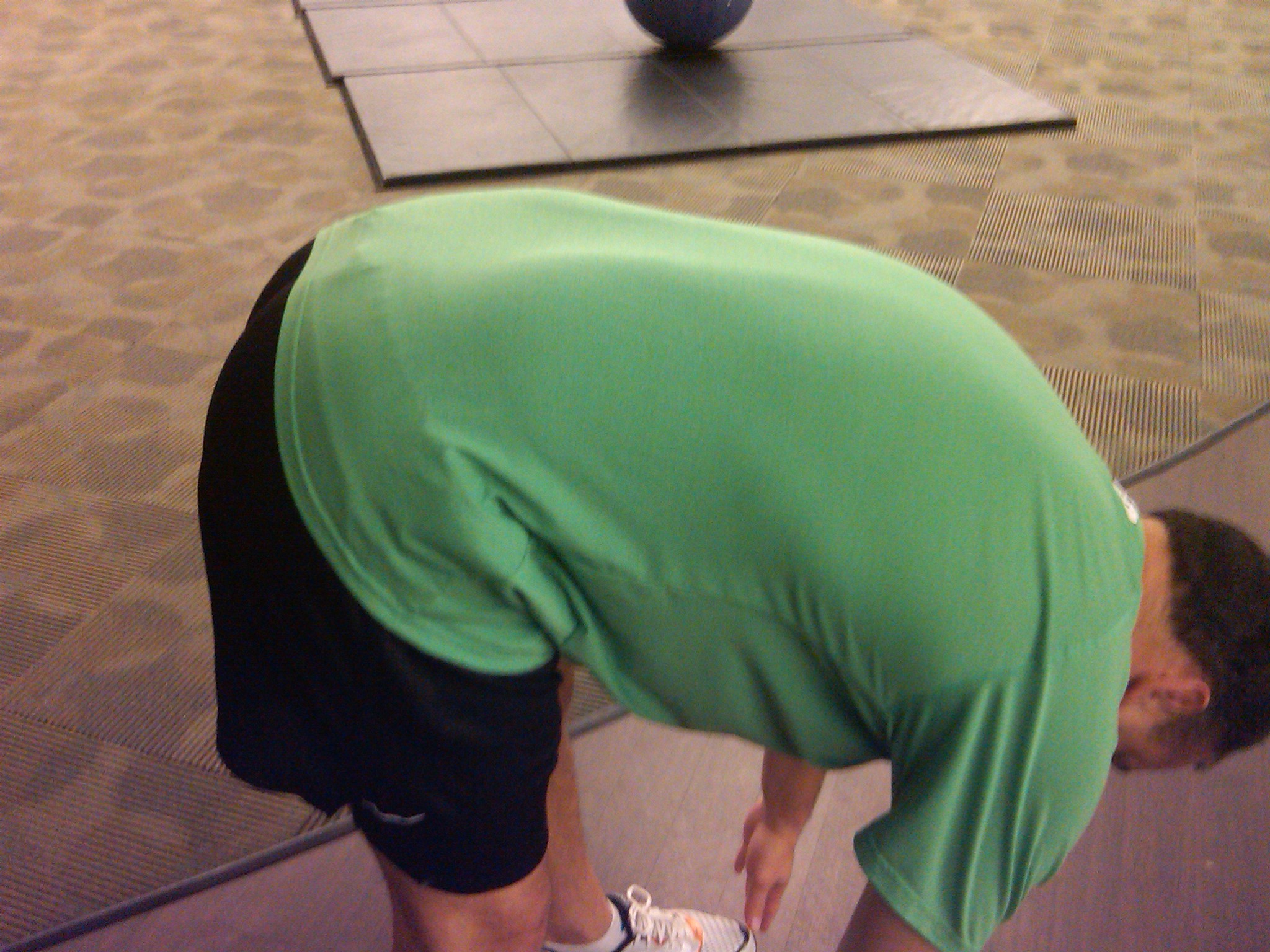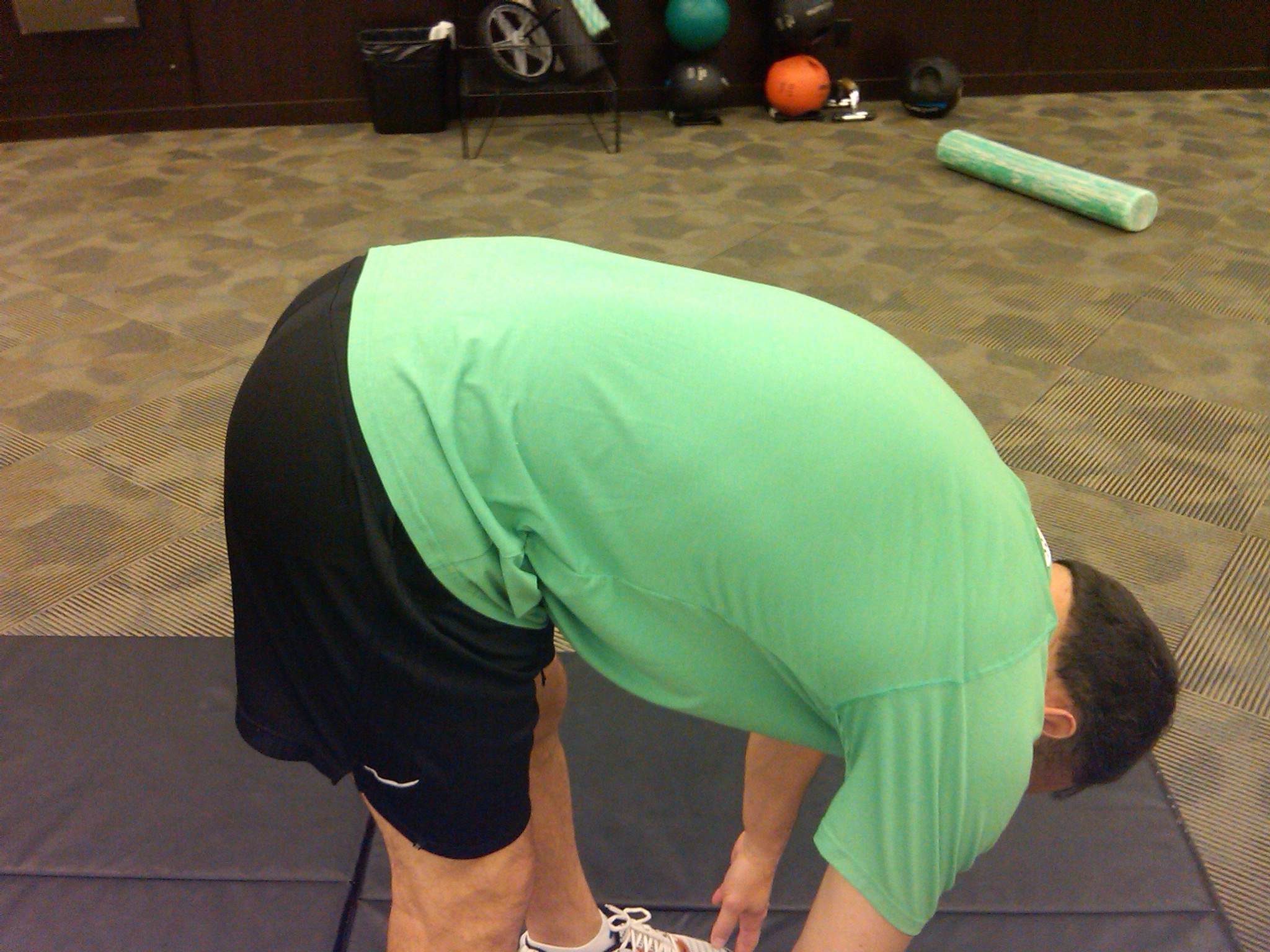Turkey, Weddings, and Fixing a Bad Back
This past weekend, Lindsay and I spent pretty much all our time attending my cousin Erin’s wedding in Stony Plain, meeting with family who came in from out-of-town, and also eating an amazing amount of food and alcohol (primarily me) to celebrate Thanksgiving here in Canada. Additionally, we got to see pretty much the majority of our combined families, and introduced our parents to each other (Note: no one got a drumstick in the eye. I was extremely disappointed). On top of that, the Oilers won their second game of the year, tying them with the Maple Leafs for top spot in each division!!! This brought on the cries of “we’re going straight to the cup!!!” after only two wins by superfans with nothing better to do in life but pine for the glory days. To give you an example of how intensely amazing this weekend was, my cousin (not the marrying one) showed up the day after the wedding, wearing the same outfit as the night before, slightly dirty, carrying a bottle of hot sauce, and nursing a possibly broken ankle. Good times, good times.
On top of that, on Friday one of my clients who has been recovering from a mild back sprain made a comeback to the soccer field, completely pain-free. In his mind was a completely intense and hard-fought battle, but to those looking on from the stands it was an eerie combination of full contact drinking while wearing flat-soled shoes and lots of kicking, simultaneously flopping from minimal contact and shin-shots. I thought today I would show how I managed to help him improve his strength and stability to do this mind-numbing display of man-tastic sport.
Phil came in about 6 weeks ago after spending the past 4 months trying to get a back sprain to settle down. His first session with me showed that he had an obvious spinal hinge at L1-2, which is shown here:
 He had pain with spinal flexion, as well as extension with rotation to the right. I had him work on light extension postures and McKenzie stretching of the spine into extension, and had him do some basic spinal stability exercises, and at the end of the session he was able to get a spinal position like this:
He had pain with spinal flexion, as well as extension with rotation to the right. I had him work on light extension postures and McKenzie stretching of the spine into extension, and had him do some basic spinal stability exercises, and at the end of the session he was able to get a spinal position like this:
 The hinge was reduced, and his pain was reduced from a 6 out of 10 during rest and activities down to a 2 out of 10. After six weeks of progressive strength and stability work by training the movement patterns listed above, he was able to reduce this hinge to an almost unnoticeable amount, while increasing his hip strength and mobility, and also reducing his chronic hip flexor tightness. Here’s what his front bend looked like on Friday:
The hinge was reduced, and his pain was reduced from a 6 out of 10 during rest and activities down to a 2 out of 10. After six weeks of progressive strength and stability work by training the movement patterns listed above, he was able to reduce this hinge to an almost unnoticeable amount, while increasing his hip strength and mobility, and also reducing his chronic hip flexor tightness. Here’s what his front bend looked like on Friday:
 Not bad for 6 weeks!! He has almost no pain except for the occasional spasm when he sits for too long, and was able to play soccer without having to worry about his back, even though he dove for a few balls and made some pretty good plays. He still has a little ways to go before he’s feeling fine, but he’s well on the way.
Not bad for 6 weeks!! He has almost no pain except for the occasional spasm when he sits for too long, and was able to play soccer without having to worry about his back, even though he dove for a few balls and made some pretty good plays. He still has a little ways to go before he’s feeling fine, but he’s well on the way.
Here’s an overview of some of the exercises I had him performing:
So why did I want to share this story? Because the approach taken to work on his back was completely different from most trainers, and even physios and chiros would want to take. The basis was to train and treat the movement patterns that were dysfunctional, rather than looking at specific structures and tissues. I could have had him doing all the core strengthening in the world, but if I had him doing spinal flexion or rotation movements to increase the strength of his abs, he would have probably had more pain than when he walked in. What can I say? It works.
Pain has to come from somewhere, typically a muscle strain, ligament sprain, or joint dysfunction. each tissue causes movement in combination with each other, which means there is no possible way to isolate any tissue completely, nor should they be isolated. That would be like a family get-together event that didn’t involve drinking in a garage: just not possible, and oh so inhuman. By training the movements that effect the desired tissues, we can help the body to heal properly.